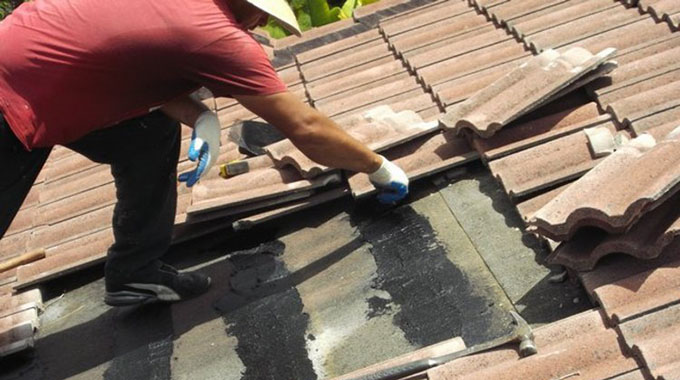How to deal with roof leaks

Rebecca Kabaya Home and Garden Writer
Home maintenance, including roof repairs, is an important and costly responsibility when you are a property owner. Unfortunately, it becomes even more expensive when you face the cost of unexpected roofing repairs especially during the rainy season.
As much as we are thankful for the rain, the season brings with it the spectre of the dreaded leaking roof.
People need to ensure that they will not be running around looking for more buckets than you have by making sure your roof is well. Some say the best time to work on your roof is in the in-between seasons, when it’s not too wet and not too hot.
It is not always on your agenda in the dry months to give your roof a good inspection, but it is a must-do and should become an annual habit. Once the rain starts and your home is leaking, it is usually not possible to fix the leak until the rain has stopped, and by then the water damage could be quite considerable. It is wise to give your roof a thorough inspection before the rainy season begins.
Roofing expert Brian Matarise, said no matter what type of roof one has protecting their home, they all need to be checked and regularly maintained because normal wear and exposure to the elements dictates so.
Matarise said there three types of roofs and they all require various measurement of care. These are flat, pitched and chimney roofs.
“Most flat roofs are made from asbestos or corrugated iron. If the roofs are built inside parapet walls, the gutters need to be checked often before and during the rainy season for leaves and any other debris that could cause them to block and overflow.
“If the down pipes get full of leaves, the gutters will fill up and the water will spill over and run into the house down the interior wall located under the gutter. This kind of water leak can cause maximum damage and it is the easiest to prevent. “If your flat roof is made of concrete, make sure the sealer used is not pealing or cracking as this too can lead to water leakage and damage. Ensure all drains are free of debris that could cause any blockages,” he said. Second is the pitched roof, which can be covered in all sorts of materials, including thatch, corrugated iron and a wide variety of different tiles. Ridge tiles, roof valleys and flashing are all prime leak weak spots.
This means that one has to go around the roof and check that all the flashing is still in place and well-sealed with waterproofing membrane. Matarise added that sometimes extreme hot or cold conditions can cause the membrane to pull away from the flashing and if left untreated, this will lead to leaking.
Thatch roofs need to have regular inspections by a professional, as they can be dangerous to climb onto.
“Check the roof for broken tiles and replace them. Make sure all the ridge tiles are secure and held together by cement and sealer. It is better to be over cautious, than pay the high price of fixing water damage. “If nails are used to secure your roof covering, ensure that the holes left behind from missing nails are sealed up. In a big storm, a small nail hole could lead to serious water damage on your ceilings.
“Most builders install larger than normal gutters and down pipes, but if you get a leak every time you have a hailstorm, it would be prudent to increase the size of both your box gutter and down pipe,” he said.
Lastly, but not least, the chimney is often the major culprit of leaks.
“Very often the structure is solid, but the cowling at the top of the chimney is not sufficient to stop the rain from getting in during a windy storm. If this is not sorted out, the entire metal casing of your fireplace will eventually rust away.
“Also check the seals between the roof and the actual chimney as the heat generated by the fire can very often cause the seal to peel away or crack. “If there are any cracks and gaps on the roof l recommend filing them in with a sealant or filler. Choose a flexible sealant, which can expand or contract in the heat or cold. Broken or damaged slats and tiles should be properly replaced or repaired,” he said.
Matarise said if people just do these few simple checks before the rainy season, there are guaranteed to be able to prevent any leaks and have a dry and undamaged home.
Most leaks can be sorted out by individuals before they get too serious and end up causing a lot of damage










Comments